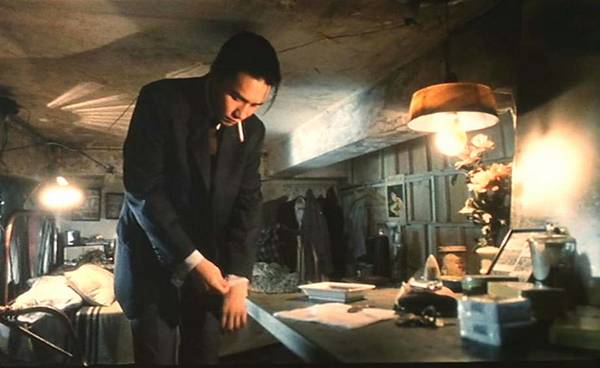2004, TSPDT Rank #875
Many great directors have continually recycled the same themes over the course of their careers, but few have made films like 2046, which is essentially a pastiche of Wong Kar-Wai's past work made by Wong himself. The two of his films referenced most heavily here are Days of Being Wild and In the Mood For Love. Many of the main characters and visual tropes from these two films resurface in this film, although it is as if they are being viewed through a new lens. This is partly due to the film's strange science fiction sequences, which are scattered throughout the film at intervals, but that is not the only reason. More important is the way that characters and themes from Wong's previous films are recontextualized, altering the way that they are remembered and expanding upon the ideas proposed in those earlier movies.

Wong also tackled a difficult concept in 2046 - following a writer's creative process and the connection of their work to their personal life. A few films, like Spike Jonze and Charlie Kaufman's Adaptation, have managed to do so in a way that is vivid and exciting, but most of the time this is a concept which misses the mark. Wong does some very interesting things with it though, building the film's narrative around the concept of a man trying to forget his one true love, the one that got away, while writing a science-fiction story as an allegory for his own struggle. The two main characters from In the Mood for Love are reprised here - the writer, Mr. Chow (Tony Leung) and his lost love, Su Li-zhen (Maggie Cheung) - but neither appear exactly as they did in that film. Instead, the characters are reinvented, each are occasionally replaced by surrogates (played by Takuya Kimura and Gong Li, respectively), and Mr. Chow's story expands to include casual relationships with a number of different women (played Zhang Ziyi, Carina Lau and Faye Wong).
If this sounds complicated, that's because it is. But for most of the film, Wong's winding, fractured approach works quite well. It isn't until the final section of the film, when he begins indulging in turgid repetition and attempts at profound poetic statements that the film's precarious sense of balance begins to fall apart. As with most of Wong's work, 2046 is most notable for taking chances and going places that most other films don't go. However, with this quality comes a lack of restraint and structure, which ultimately causes 2046 to collapse under its own weight. But before this happens, the film manages to be an effective summary of Wong Kar-Wai's career as well as a daring exploration of new territory.






